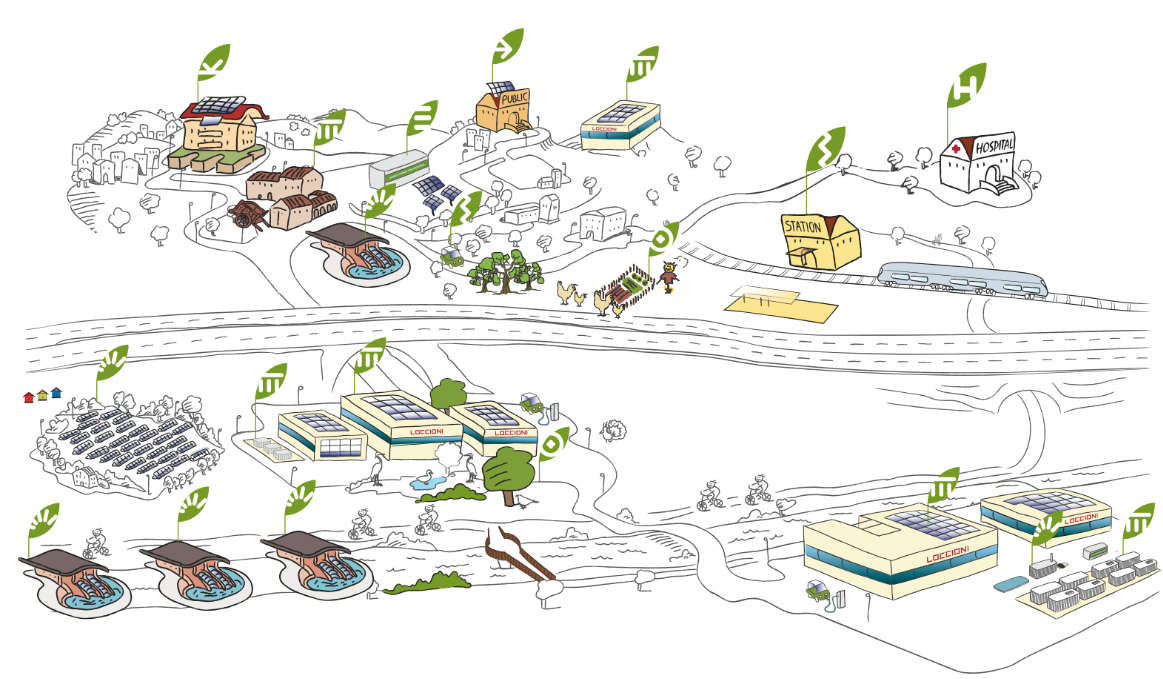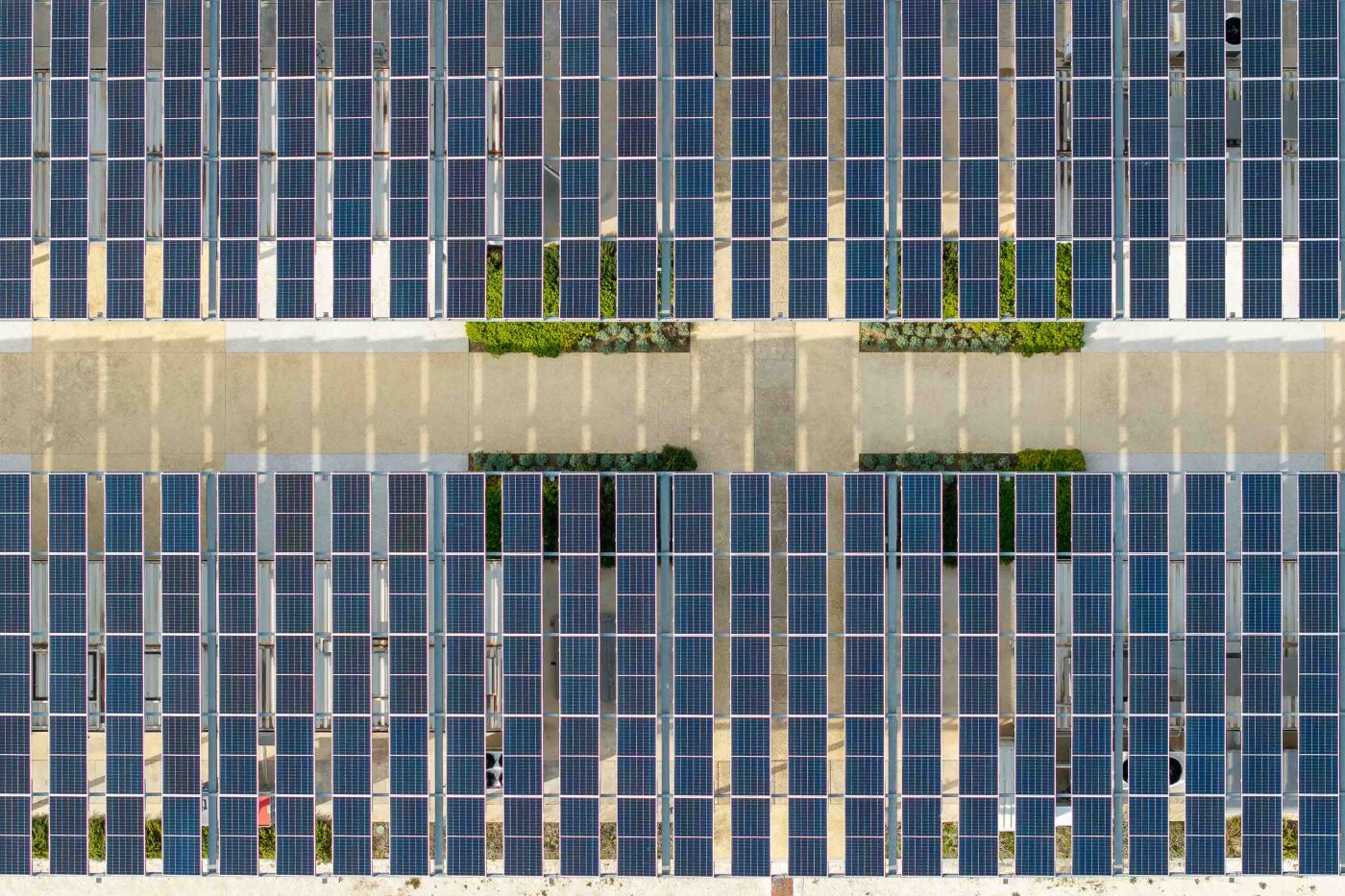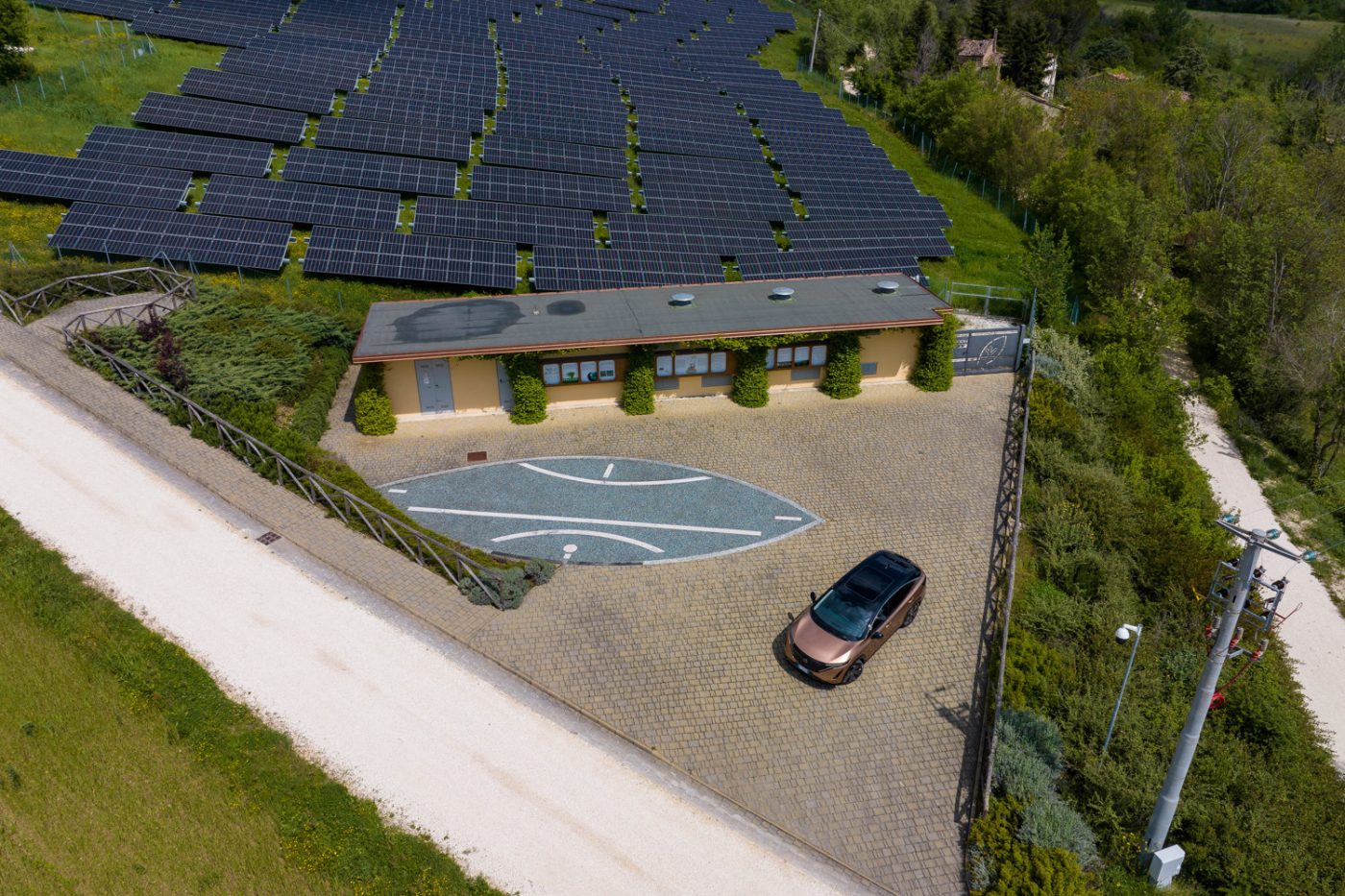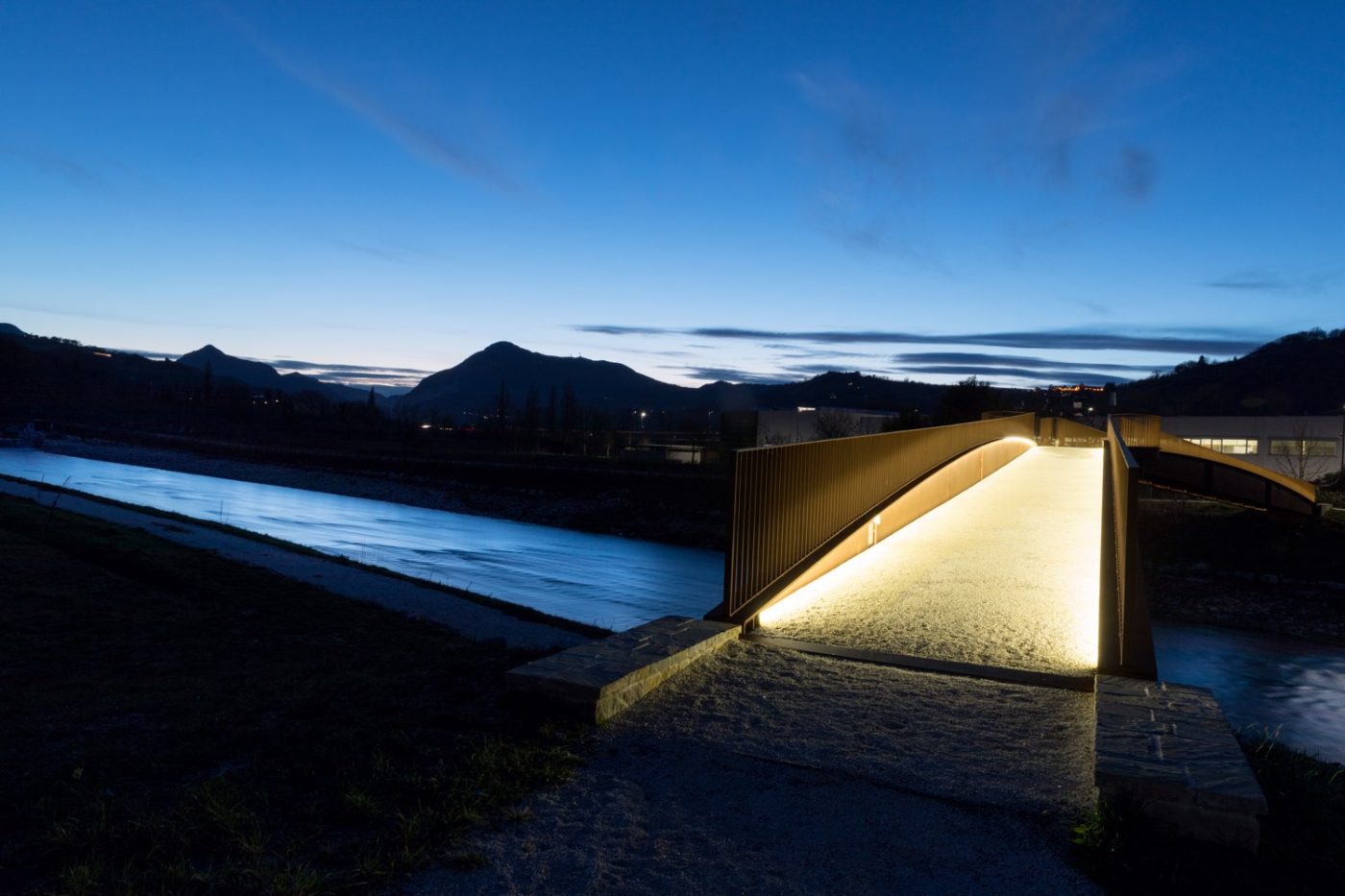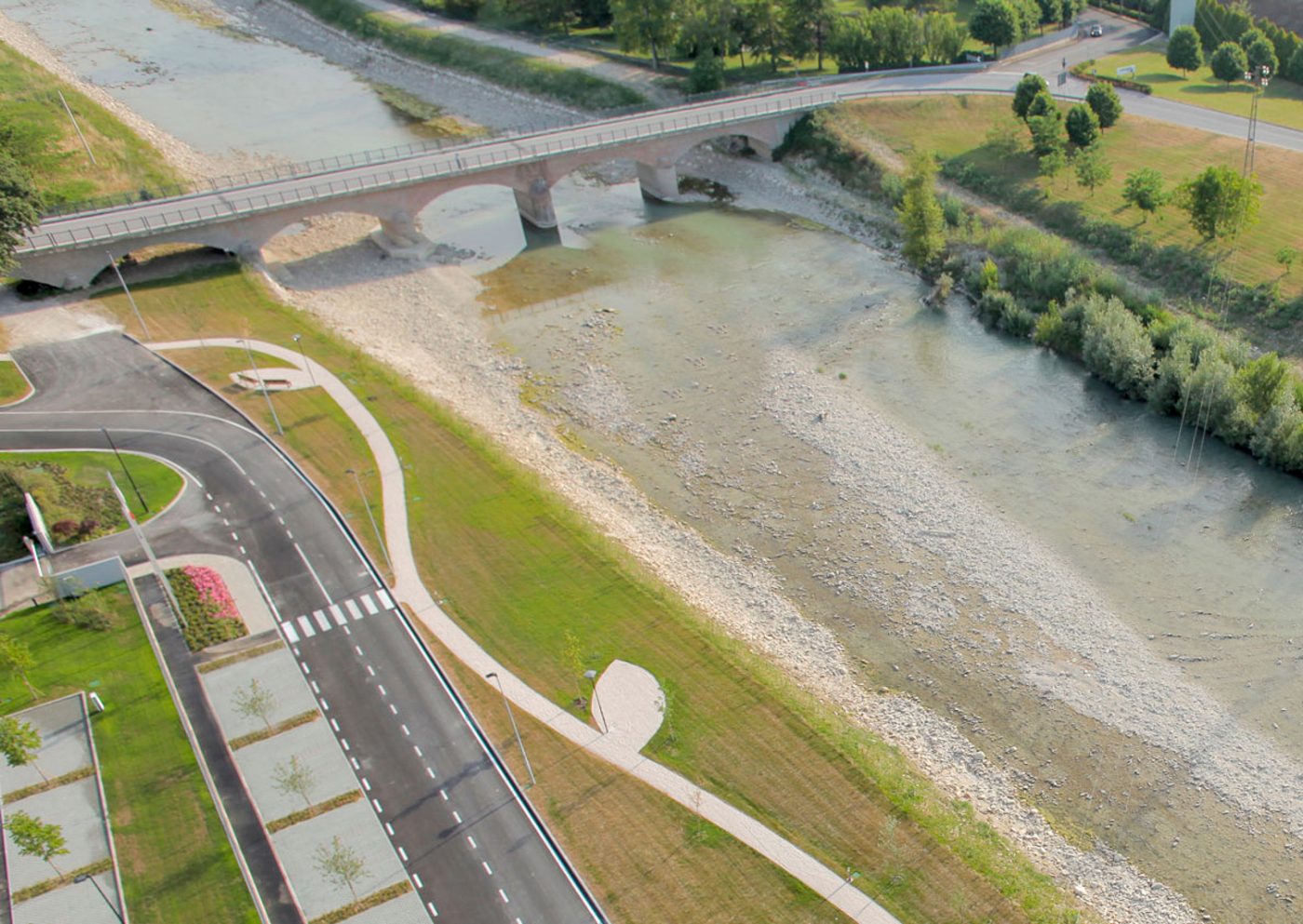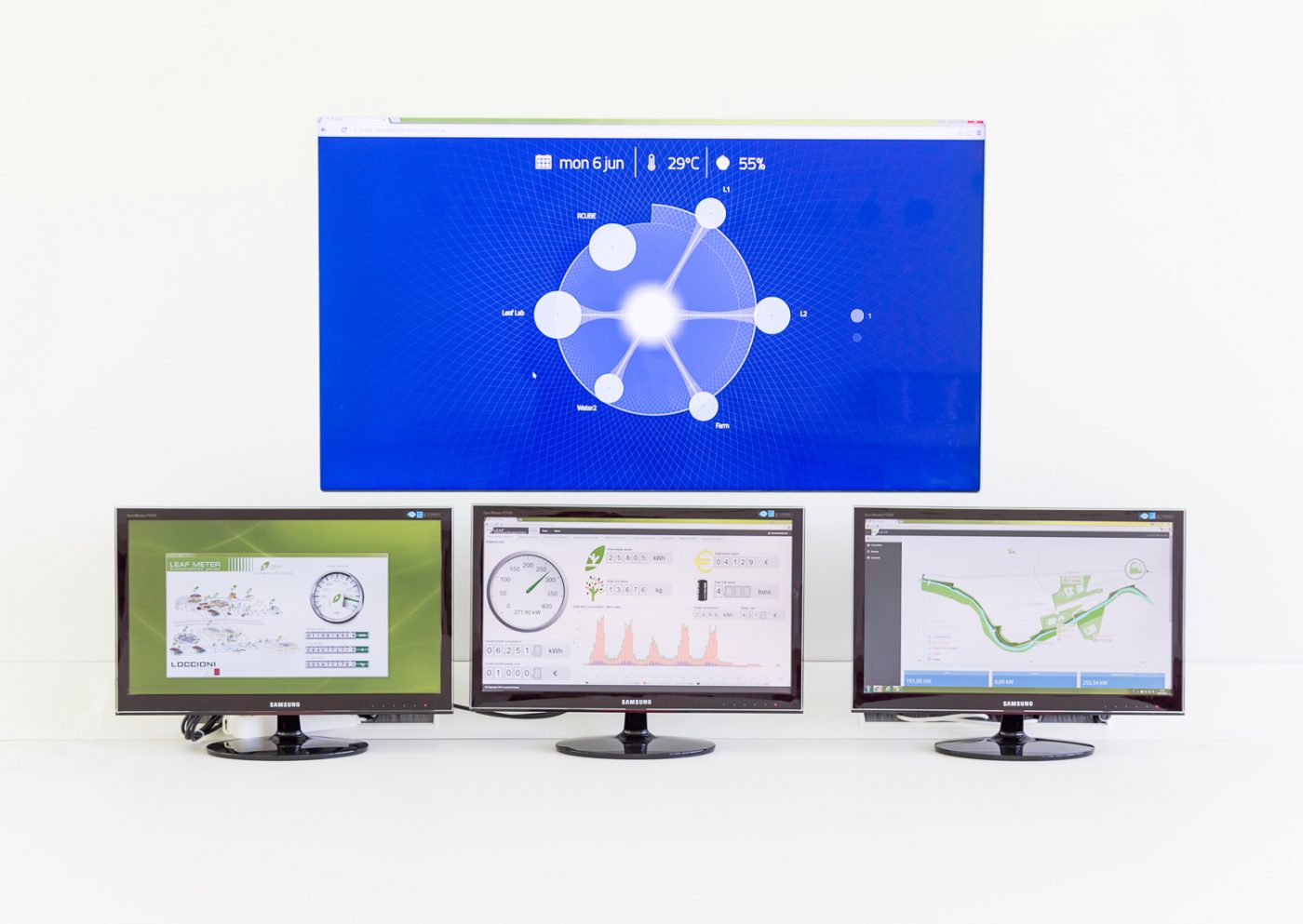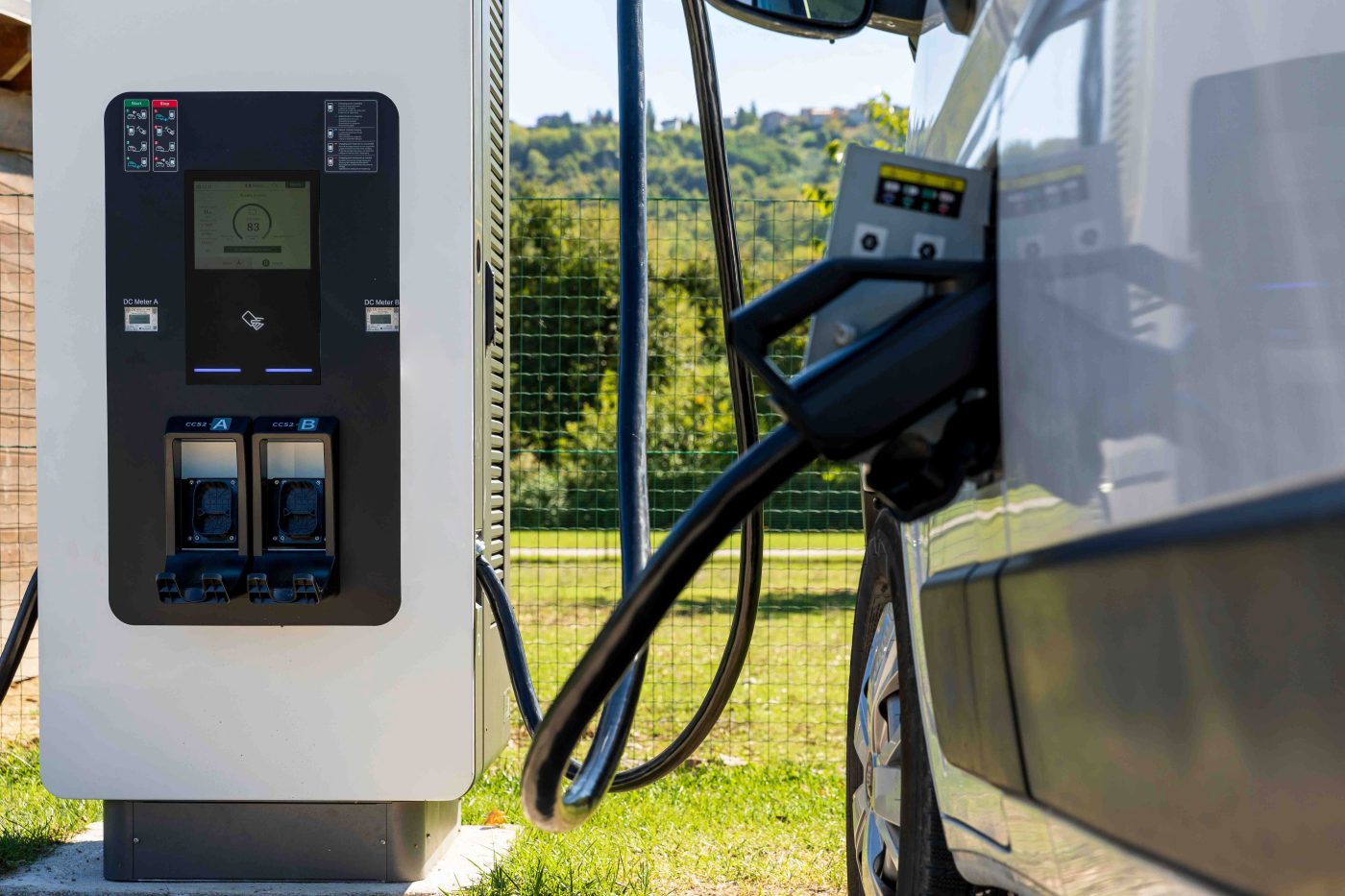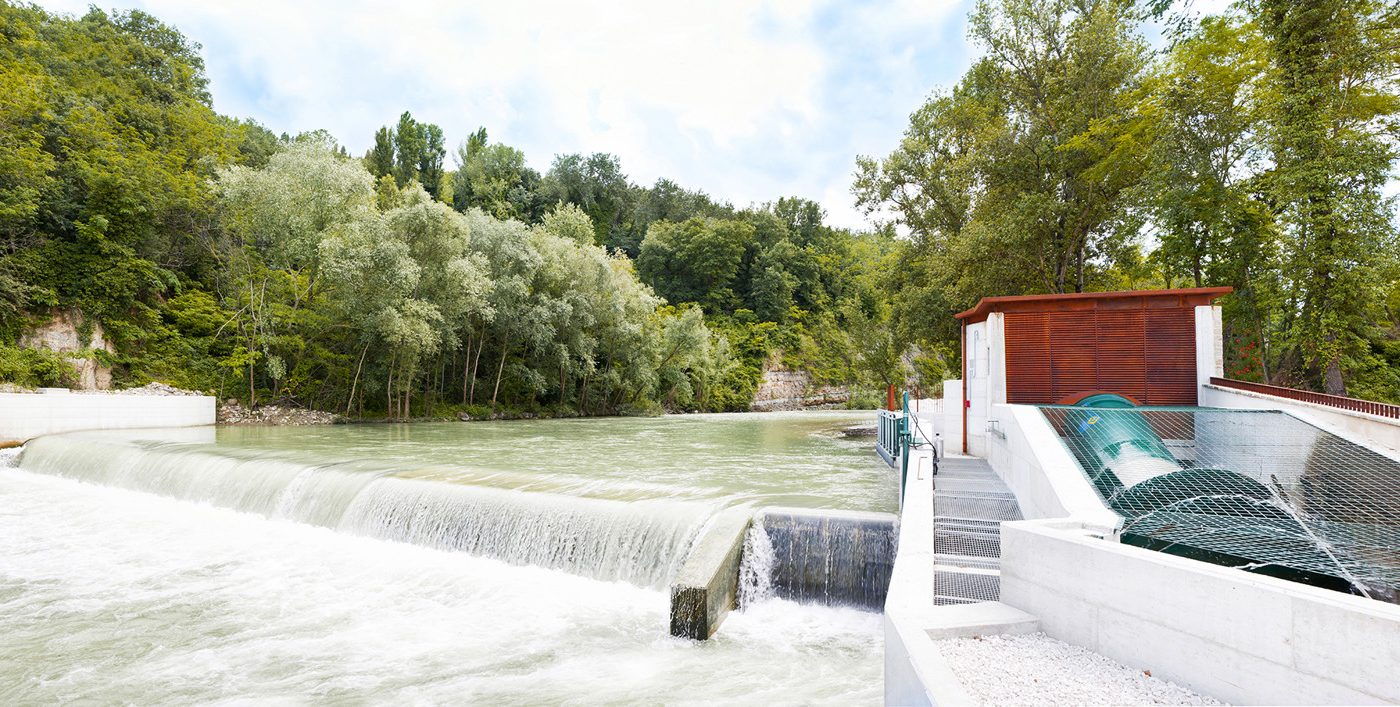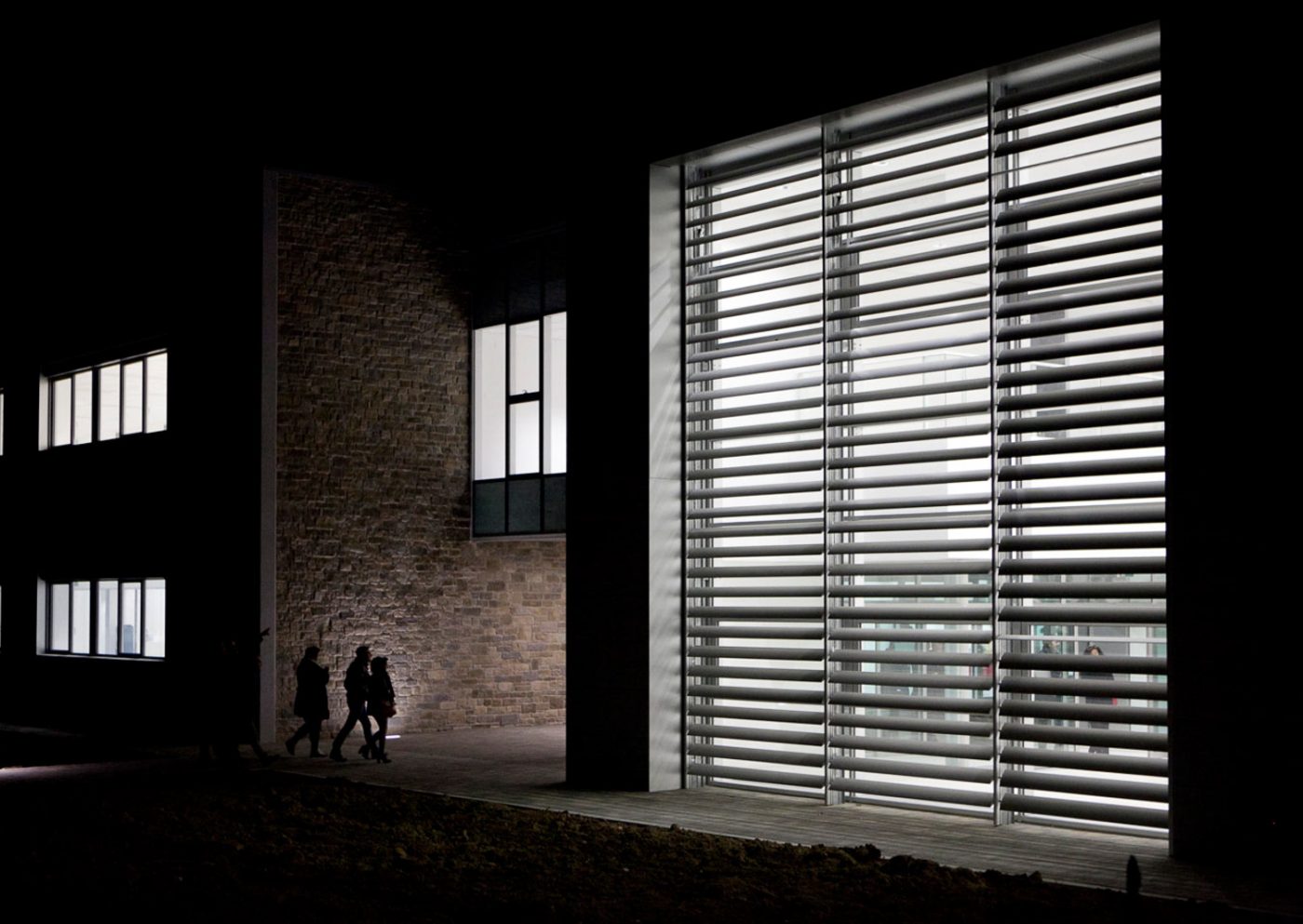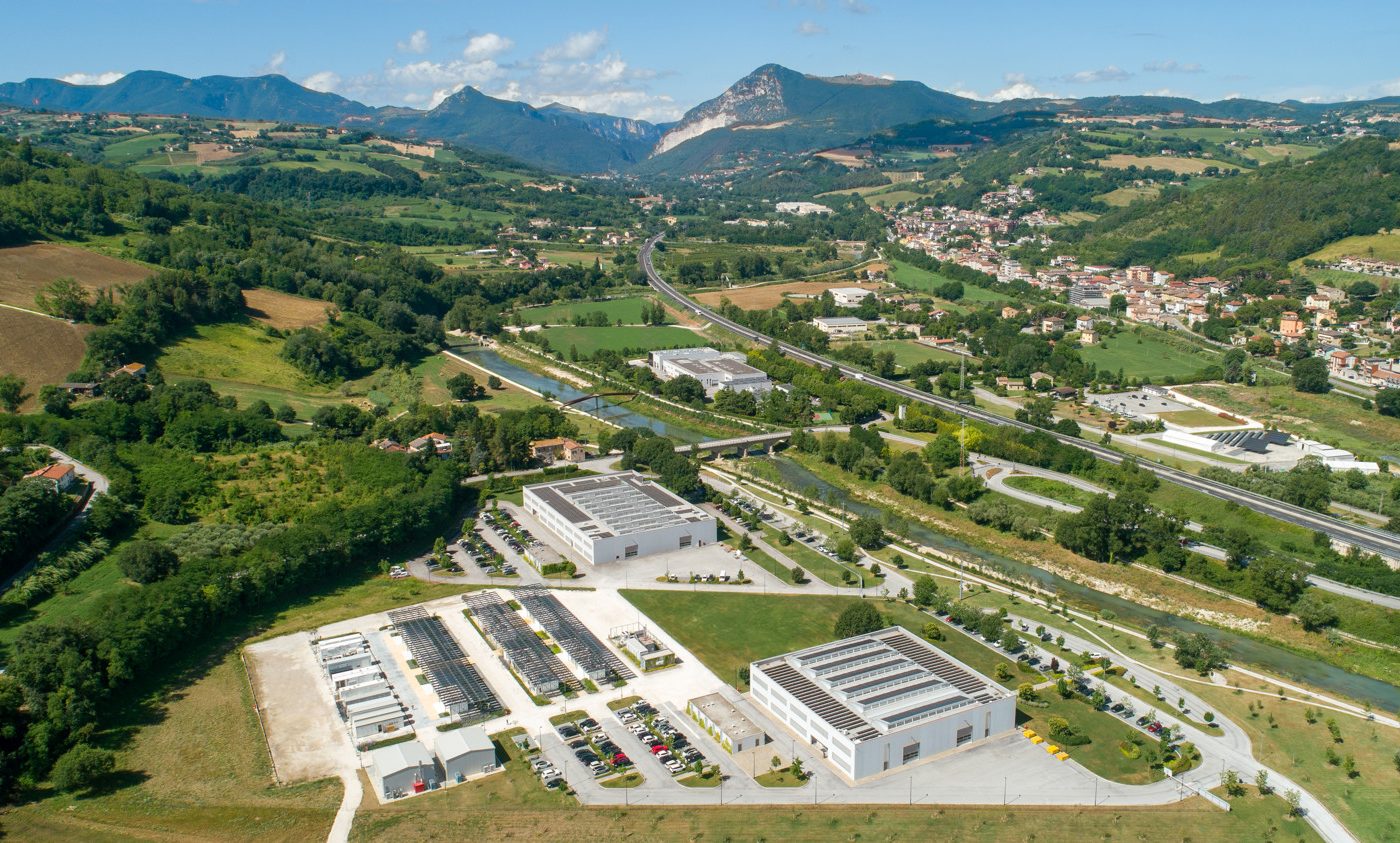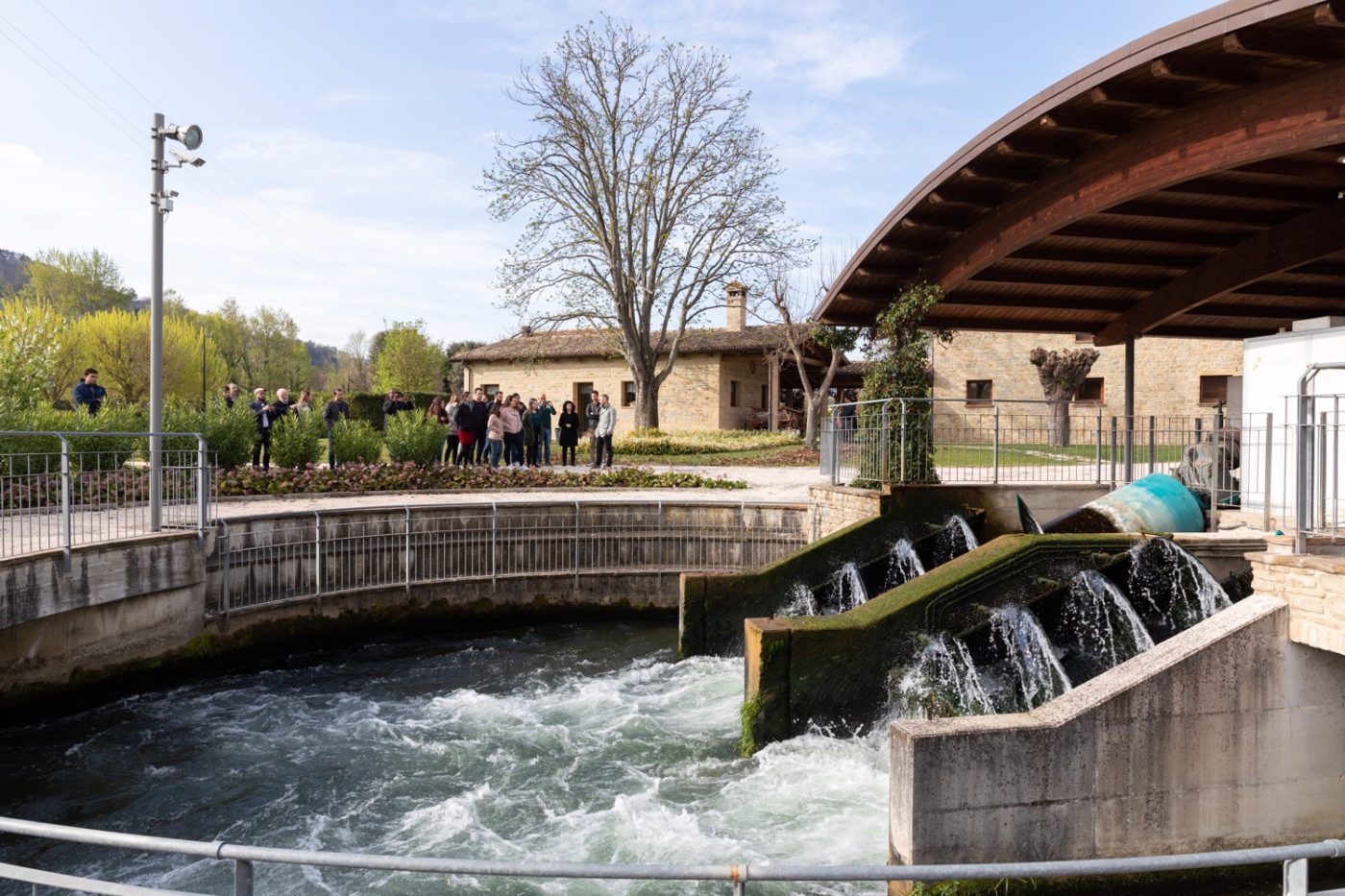In the century of decarbonization, the Leaf Community is the real-world laboratory of the ecological transition, where this challenge takes tangible shape. For over thirty years, we have been testing solutions to harmonize technology, the environment, and well-being, measuring results and sharing best practices.
Decarbonization is the new name for quality: it means efficiency, recovery, zero waste, continuous improvement, and technological challenge. It means identifying opportunities by riding the waves of electrification and digitalization—precious chances to develop new, meaningful work. But above all, it means pursuing the purpose of the enterprise: measuring to improve, for the well-being of people and the planet.
The Leaf Community: a zero-emission micro-grid
Enrico Loccioni was born in a home without electricity. As an adult, he created the Leaf Community: a 100% electric micro-grid powered by the energy of the sun, the earth, and the river. It’s an ecosystem where people live, work, and move with zero emissions. The labs on both banks of the Esino River, where over 450 young professionals develop cutting-edge technological solutions for the world’s leading industrial brands, are a living, breathing example of what we now call the ecological transition.
The journey toward decarbonization began long ago, in the 1980s, when Enrico and Graziella decided to air-condition all workspaces for the comfort of their employees—and were stunned by the first utility bill! They never abandoned the mission of improving people’s well-being, but they added a new focus: cost awareness and environmental sustainability. Thus began a lifelong commitment to measuring to improve, cutting consumption, emissions, and costs.
A pivotal moment for the future Loccioni ecosystem came in 1990 when the Esino River flooded, causing major damage to the region and the business. This event sparked the creation of the 2 km of future® project: an integrated system for resilience, protection, and territorial enhancement that transformed the river from a threat into a resource.
New laboratories were built with increasingly better energy performance, evolving from Class A+ to NZEB (Nearly Zero Emission Building). In 2014, the Loccioni micro-grid became a reality with the installation of the first electric and thermal storage systems and the development of the Energy Management System.
Second life for EV batteries and circular energy
The expertise developed on the ground became a source of growth and opportunity for the company and its people, who continue to take on technological challenges. Loccioni has become a trusted partner of E.ON, Enel, Terna, Vattenfall, and Northvolt in the energy decarbonization journey—through storage systems, micro-grids, and energy islands.
One of the most innovative projects is the Second Life Storage System. Sparked by a challenge from Enel and a collaboration with Nissan, in 2022 the first energy storage unit powered by second-hand EV batteries was activated in Melilla, a Spanish city on the African coast. To study the system further, Loccioni integrated it into its own micro-grid, dedicating one of the Nomadic Labs to Italy’s first stationary second-life storage system. Through data use and analysis, feedback is provided to battery manufacturers.
Loccioni collaborates with major automotive brands to test their electric motors, inverters, e-axles, and, of course, their batteries. This experience proves invaluable when it comes to repurposing used EV batteries as storage units.
In ENEL’s upcoming pioneering project, Loccioni will install an innovative second-life battery storage system at Rome Fiumicino Airport (for ADR – Aeroporti di Roma), using end-of-life batteries from Nissan, Mercedes, and Stellantis.
Another second life for batteries comes from Northvolt in Sweden, which aims to produce “the greenest batteries in the world” with up to 50% recyclability. To support this mission, Loccioni designed and built the first automatic, multi-purpose discharge and test line, installed in Hamburg and operational since October 2023. The system can safely and efficiently discharge any battery type from 1000 to 0 volts. This delicate, highly complex process is essential to recover materials and rare earth elements. It’s a key step on the road to decarbonization.
Electric vehicles
Since the 1980s, Loccioni has worked to improve the quality and sustainability of vehicle propulsion systems—reducing emissions and increasing efficiency.
As electric mobility has evolved, major automakers continue to turn to Loccioni: Audi, Jaguar Land Rover, Mercedes, Stellantis, Volvo, as well as luxury brands like Ferrari, Maserati, and Lamborghini.
Batteries, inverters, electric motors, e-axles, down to the individual battery cells and the core of the electric powertrain: the power module, which now enters a new frontier with silicon carbide semiconductors. STMicroelectronics has chosen Loccioni as a partner not only for final power module testing (the component that drives the vehicle) but also for the semiconductor manufacturing process.
From electron to molecule
And then there’s hydrogen. Hydrogen has received a significant boost thanks to decarbonization efforts and regulations to reduce CO₂ emissions, as highlighted by COP28.
Today, hydrogen is mostly produced from methane gas (a fossil fuel) and used in the production of fertilizers, ammonia, steel, and more. The technological challenge is to produce it from water and renewable sources—green hydrogen.
This brings a new component to the market, one that must be characterized, tested, and optimized: the electrolyzer, which splits water molecules to produce hydrogen and oxygen.
Loccioni is fully engaged in this sector, thanks to its deep expertise in fluid management (even under dangerous, high-pressure, and extreme conditions). The company partners with automotive component manufacturers like Bosch and Schaeffler, now producing fuel cells and electrolyzers.
Major players in Oil & Gas—such as Nuovo Pignone, SNAM, and ENI—also see hydrogen production as a pathway to decarbonize their processes. This opens a new supply chain for Loccioni, which once focused on controlling emissions from refineries, steel plants, and coal power stations. Today, it applies its measurement and testing know-how to components involved in hydrogen production (electrolyzers, valves, etc.), creates process control systems for plants, measures hydrogen quality, and explores hydrogen as an energy carrier for storage.
Once low-cost, 100% green hydrogen becomes viable, an exciting new frontier will emerge: using hydrogen directly as a fuel. This means transforming engines and components to run on hydrogen, investing in quality and safety of the propulsion system, and recovering and decarbonizing an entire value chain. Companies like Bosch, Phinia, Dumarey, and Liebherr are already doing this for commercial vehicle components.
They’re coming to the heart of the Marche region, where Loccioni is building Nomadic Labs of the Molecule—containerized testing facilities for components and processes related to hydrogen production, use, and storage.


